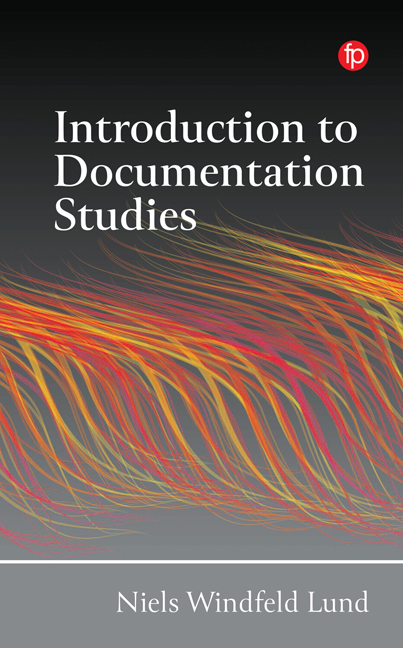 Introduction to Documentation Studies
Introduction to Documentation Studies 7 - Science: ‘The Danish Revolution, 1500–1800’ – a Doctoral Dissertation
Published online by Cambridge University Press: 28 March 2024
Summary
Introduction
On May 7, 1991, the dean of the Faculty of Humanities at the University of Copenhagen, Denmark, Jens Erik Floor, wrote that the dissertation ‘The Danish Revolution, 1500–1800: An Ecohistorical Interpretation’ by Thorkild Kjærgaard had been accepted for public defense on December 6, 1991 at 1 p.m. at the University of Copenhagen.
A doctoral dissertation is one of the most iconic forms of documentation in the scientific world, through which one proves the value of and trust in science both within and outside the scientific world subsystem. In this chapter we will investigate the documentation processes and documents in connection with the doctoral dissertation to show how the continuous evaluation of scientific documentation works.
Science: a subsystem
Like classical music, literature, and the visual arts, sciences also form a specific subsystem in society. It is characterized by:
• the primary activity – scientific research and education in science;
• the core institutions – universities, academies, labs and academic organizations, and the social group of academia;
• a shared and preserved scientific language subdivided into different disciplines and fields.
Science has a long history when one considers it as the systematic collection of knowledge. In the 2nd century AD, the ancient Mesopotamians collected knowledge on medical issues, on natural materials, and about the universe. In even this brief description we can already identify an important feature of science: the systematization or classification of objects or phenomena.
Next after the classification of objects or phenomena comes the detailed description of those objects or phenomena. This description is supposed to follow a certain method. Besides classification and description, there are collections of the objects themselves in museums, and collections of descriptions in libraries and archives. These descriptions form some of the first scientific literature. Then there is the book, the monograph, written by a scientist; there are also important scientific journals, from the time of the Renaissance onwards, with an editor and editorial board, in which scientific articles following a specific format are published. The scientific accounts of objects or phenomena explain why they exist. To do this scientifically, it must be done in a transparent way, demonstrating how proofs have been carried out and presenting the results in a specific way that has been reviewed by one’s scientific colleagues in a peer review.
- Type
- Chapter
- Information
- Introduction to Documentation StudiesComplementary Studies of Documentation, Communication and Information, pp. 91 - 104Publisher: FacetPrint publication year: 2024
